I remember the day I first saw an Alpine Swift (Alpensegler, Apus melba). It must have been around Christmas time late 1990 or so. Hot. We were just driving in to downtown Durban as a wave of swifts shot over the car. Swifts everywhere! What a sight. As usual, most of them were whiterumped and little swifts (Kaffernsegler und Haussegler) but then these HUGE swifts came by. They looked like mammoths zooting across the sky. And with that bright white belly! I knew exactly what they were almost before I had even seen them.

Over the years I got more familiar with them. Dawn cape parrot counts overlooking Hlabeni forest were often greeted by the swooshing of razor-edged wings as they sped past our faces. Breathtaking. To say the least.
I was reminded of these lovely birds the other day when I found the most incredible photo-blog by Graham Catley. He had posted three images of Alpine Swifts feeding on the wing - some of the best swift photos I have ever seen.
And then yesterday afternoon I was peering outside (as I am wont to do) and there was a whole group of them feeding over the houses in eastern Zirl. There movements are so graceful, so, well swift. It seems they are just returning from their migration to Africa and we will hopefully see a whole lot more of them over the coming months, particularly in the mountain regions.
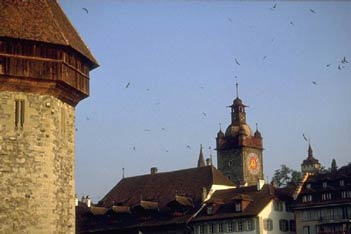 The photo that shows all the swifts circling the town (its just a wiki commons photo so I don't know where it is from) is often how you will see them - dashing quickly about. They are hard to track with your binoculars but their large size and white breast is likely to make their identification somewhat easier. Interestingly, while swifts (Segler) may look like swallows (Schwalben), they are only very distantly related. The easiest way to tell the difference between the two in the air is to look at the wing shape - swifts have long, thin wings that make them look like darting boomerangs. The swallows have a rounder wing shape, not as sharp as the swifts.
The photo that shows all the swifts circling the town (its just a wiki commons photo so I don't know where it is from) is often how you will see them - dashing quickly about. They are hard to track with your binoculars but their large size and white breast is likely to make their identification somewhat easier. Interestingly, while swifts (Segler) may look like swallows (Schwalben), they are only very distantly related. The easiest way to tell the difference between the two in the air is to look at the wing shape - swifts have long, thin wings that make them look like darting boomerangs. The swallows have a rounder wing shape, not as sharp as the swifts.The swifts belong to the order Apodiformes (meaning no feet. hummingbirds are also in this same order), an apt name for a bird with such tiny legs and feet. Talking about feet, the difference between swift and swallows is immediately obvious when one has them in the hand.
 Swifts have pamprodactyl feet which means that both the first and fourth toe can swivel forward so that all four toes are in a row. This helps the swifts cling to the cliffs when they (very occasionally) land. You can see this clearly in Prof David Norman's photo, left. The swallows have decidedly longer legs with normal bird feet, i.e. three toes forward one back. The swallows are much more likely to perch - they are the ones that you see sitting on telephone lines alongside roads and fields.
Swifts have pamprodactyl feet which means that both the first and fourth toe can swivel forward so that all four toes are in a row. This helps the swifts cling to the cliffs when they (very occasionally) land. You can see this clearly in Prof David Norman's photo, left. The swallows have decidedly longer legs with normal bird feet, i.e. three toes forward one back. The swallows are much more likely to perch - they are the ones that you see sitting on telephone lines alongside roads and fields.Alpine Swifts prefer to breed in cliff or cave nest sites, and generally lay two to three eggs. The adults feed exclusively on small insects caught on the wing, which means that during cold and wet periods, flying insect food can be severely limited. Incredibly, it seems that the chicks are able to survive these enforced fasts by reducing their body temperature (torpor) and by mobilizing the energy in their relatively large pectoral muscles (Bize, Klopfenstein, Jeanneret & Roulin 2007 Journal of Ornithology 148/4).
If you are interested in their breeding, check out the webcams of two Alpine Swift nests in southwestern Germany.
Happy birding, Dale Forbes

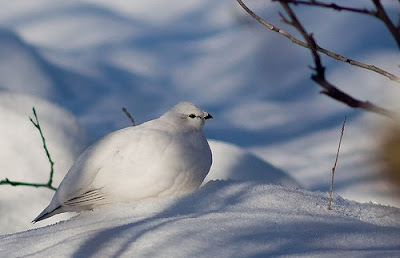



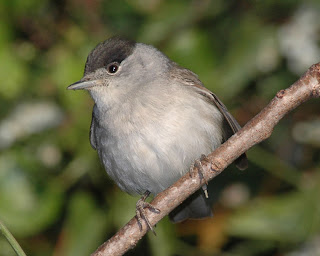
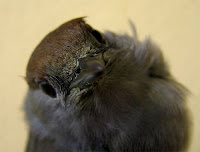


 "It's easy" he said "just look at the colour of their back." You see, both species are rather variable in their coloration but their back color is always rather constant: if it has a greenish or brownish back, it's a yellow wagtail, and if the back is grey then (you guessed it), it's a grey wagtail. Easy when you know how!
"It's easy" he said "just look at the colour of their back." You see, both species are rather variable in their coloration but their back color is always rather constant: if it has a greenish or brownish back, it's a yellow wagtail, and if the back is grey then (you guessed it), it's a grey wagtail. Easy when you know how!

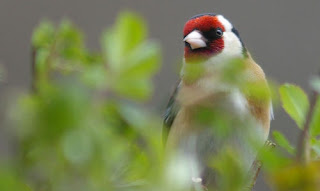














.jpg)



